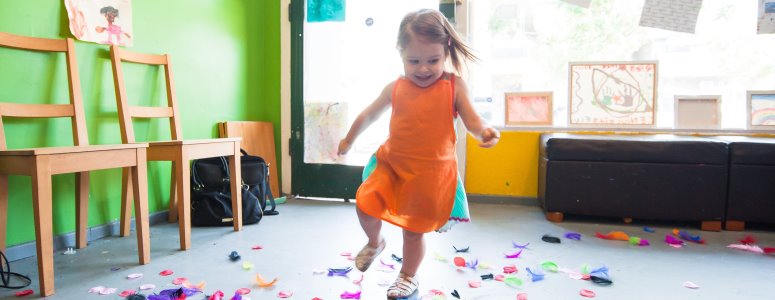
How Signing Can Make Toddlers Happier
On the subject of biting, which is a normal toddler behavior, there were several questions posed from several frustrated mamas over the years. So I decided to give my own advice on the subject, having dealt with it for quite a long time!
Biting, hitting, yelling: all of these behaviors can be seen in any toddler classroom, playdate, or other extracurricular activity involving young children who are not yet verbally expressive. Most teachers and parents try their hardest to avoid these instances, but when you have eight to ten 18-month to 2-year-olds in one room, it can be pretty hard to avoid every instance.
It seems that the biggest problem occurs when a child wants a toy another child has, or wants the attention of an adult otherwise pre-occupied. The child gets frustrated, and the fangs come out. The child then takes this opportunity and chomps down.
This does not mean the child is destined to be a cannibal, or that they have a violent streak. This is merely their way of communicating. But there is a way to attempt to lessen the instances of accident reports, angry parents, and banning from playdates, get togethers, and Kindermusik sessions: Research has indicated that infants and toddlers who can use sign language have fewer incidents of unwanted habits.
Teaching a child to sign, will help them become more expressive, and help them to tell another child, teacher, or other adult, what they want, and why they are upset.
Here are some of the advantages of signing in childcare settings:
• Signing helps to lower noise levels in preschool classrooms by reducing frustrated screaming and crying. Children spend less time crying and teachers spend less time playing the guessing game, allowing more time for positive interaction.
• Signing gives children with special needs the opportunity to interact in a meaningful way with typically developing children. Acceptance of children with special needs is greatly enhanced.
• Signing serves as a “language bridge” for children and staff who speak different languages-the sign is the same for eat (English) as it is for comer (Spanish).
• Signing empowers children because they can communicate successfully with those around them. This sense of empowerment significantly contributes to babies’ happiness.
•Signing enhances early language skills because children can engage in two-way conversations with their teachers and their peers at an earlier age.
• Signing helps children solve problems. “Stop” and “share” are commonly-used signs that help children learn to get along with one another. Signing significantly reduces problems with biting. Take away the frustration and biting goes with it.
• Signing enables children to control the topic of conversation and express their unique interests at an earlier age. This allows teachers to design activities that will enhance children’s specific interests.
• Signing adds fun to daily routines and circle time and music activities.
• Signing facilitates home-school communication and helps parents get more involved in preschool curriculum in a more meaningful way.
• Signing is appropriate for all preschool age groups (infants, toddlers, preschool, Pre-K), and it facilitates visual/kinesthetic learning.
• Signing in preschool classrooms has been shown to enhance literacy skills needed for school success: reading, vocabulary, and spelling.
Mom of four. Author, blogger, and social media manager.